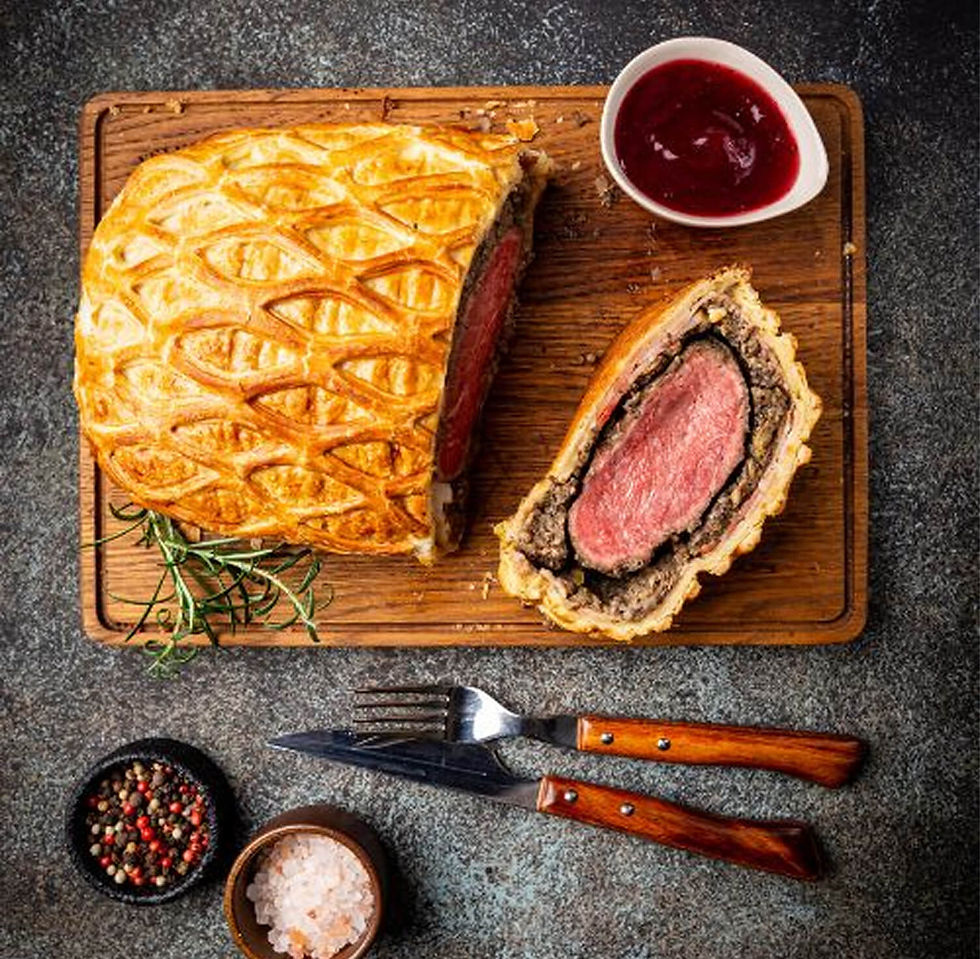Fueling Your Well-Being: The Role of Protein in Healthy Aging
- Jen Simon
- Mar 26
- 2 min read

As we age, maintaining muscle mass becomes increasingly challenging. Sarcopenia, the natural loss of muscle that occurs with aging, can lead to decreased strength, reduced mobility, and a higher risk of injury. One of the most effective ways to combat this decline is through proper nutrition—specifically, ensuring an adequate intake of protein.
Why Protein Matters
Protein is essential for muscle repair, recovery, and growth. It provides the building blocks—amino acids—needed to maintain and rebuild muscle tissue. As we age, our bodies become less efficient at utilizing protein, which means we need to be more intentional about our intake.
Benefits of Protein for Aging Adults
Prevents Muscle Loss – A diet rich in protein helps slow muscle deterioration, keeping you strong and active.
Enhances Recovery – Protein aids in the repair of muscle fibers after exercise, reducing soreness and improving overall function.
Boosts Metabolism – Higher muscle mass contributes to a faster metabolism, making it easier to maintain a healthy weight.
Supports Bone Health – Protein intake has been linked to better bone density, reducing the risk of fractures.
Improves Overall Health – Adequate protein consumption can help regulate blood sugar levels and support immune function.
How Much Protein Do You Need?
The recommended dietary allowance (RDA) for protein is around 0.8 grams per kilogram of body weight for the average adult. However, for older adults looking to maintain or build muscle, 1.2 to 2.0 grams per kilogram may be more beneficial. For example, a 150-pound (68 kg) adult might aim for 82-136 grams of protein per day depending on activity levels.
Best Protein Sources
Lean Meats – Chicken, turkey, lean beef, and pork are excellent sources of high-quality protein.
Fish & Seafood – Salmon, tuna, and shrimp provide not only protein but also essential omega-3 fatty acids for joint and heart health.
Eggs – A nutrient-dense option packed with essential amino acids.
Dairy Products – Greek yogurt, cottage cheese, and milk are protein-rich and also support bone health.
Plant-Based Options – Lentils, beans, tofu, quinoa, and nuts are great alternatives for those following a vegetarian or vegan diet.
Protein Supplements – Whey or plant-based protein powders can be a convenient way to increase intake, especially post-workout.
Combining Protein with Exercise
While increasing protein intake is crucial, pairing it with resistance training is even more effective. Strength training exercises, such as weightlifting, bodyweight exercises, and resistance band workouts, stimulate muscle protein synthesis, maximizing the benefits of dietary protein.
Final Thoughts
Aging doesn’t mean you have to lose muscle and strength. By prioritizing protein in your diet and engaging in regular resistance training, you can maintain muscle mass, enhance overall health, and continue to lead an active and independent lifestyle.
So, whether you're in your 40s, 50s, or beyond, now is the perfect time to focus on your protein intake and build a stronger, healthier future!
1
Searing the Beef
Sear beef fillets on high heat for 2 minutes per side to form a golden crust. Let it cool before proceeding to keep the beef tender.
1
Searing the Beef
Sear beef fillets on high heat for 2 minutes per side to form a golden crust. Let it cool before proceeding to keep the beef tender.
1
Searing the Beef
Sear beef fillets on high heat for 2 minutes per side to form a golden crust. Let it cool before proceeding to keep the beef tender.
1
Searing the Beef
Sear beef fillets on high heat for 2 minutes per side to form a golden crust. Let it cool before proceeding to keep the beef tender.
Notes



1
Season the good fresh beef fillets with salt and black pepper. Heat olive oil in a pan over high heat and sear the fillets for 2 minutes per side until it fully browned. Remove the beef from the pan and brush with a thin layer of mustard. Let it cool.



1
Season the good fresh beef fillets with salt and black pepper. Heat olive oil in a pan over high heat and sear the fillets for 2 minutes per side until it fully browned. Remove the beef from the pan and brush with a thin layer of mustard. Let it cool.



1
Season the good fresh beef fillets with salt and black pepper. Heat olive oil in a pan over high heat and sear the fillets for 2 minutes per side until it fully browned. Remove the beef from the pan and brush with a thin layer of mustard. Let it cool.



1
Season the good fresh beef fillets with salt and black pepper. Heat olive oil in a pan over high heat and sear the fillets for 2 minutes per side until it fully browned. Remove the beef from the pan and brush with a thin layer of mustard. Let it cool.
Instructions
Quality Fresh 2 beef fillets ( approximately 14 ounces each )
Quality Fresh 2 beef fillets ( approximately 14 ounces each )
Quality Fresh 2 beef fillets ( approximately 14 ounces each )
Beef Wellington

Beef Wellington
Fusion Wizard - Rooftop Eatery in Tokyo
Author Name

Beef Wellington is a luxurious dish featuring tender beef fillet coated with a flavorful mushroom duxelles and wrapped in a golden, flaky puff pastry. Perfect for special occasions, this recipe combines rich flavors and impressive presentation, making it the ultimate centerpiece for any celebration.
Servings :
4 Servings
Calories:
813 calories / Serve
Prep Time
30 mins
Prep Time
30 mins
Prep Time
30 mins
Prep Time
30 mins
Comments